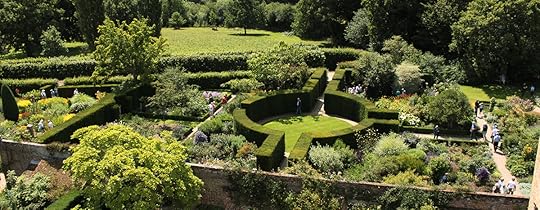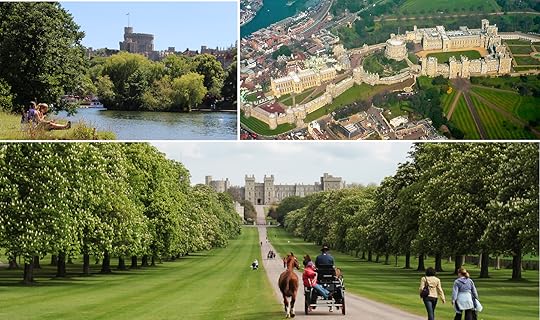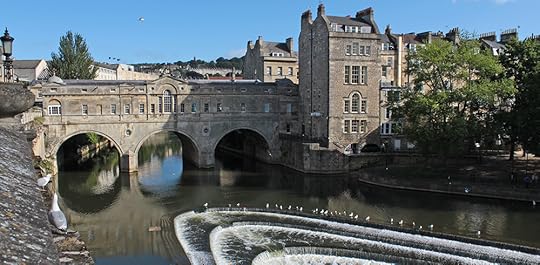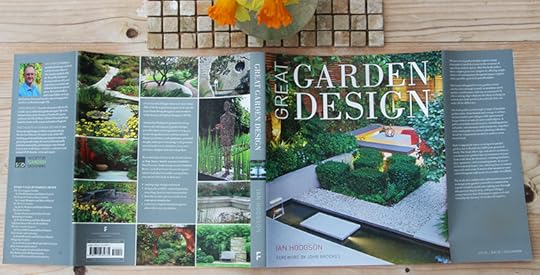Tom Turner's Blog, page 6
October 17, 2015
Chelsea Flower Show, Sissinghurst, Wisley and Tatton Park Garden Tour
England is rightly famed as ‘the garden country’ and it would be a pity, surely, to visit England without seeing some of its gardens. So we recommend a 3-day classic gardens tour which includes visits to Chelsea, Sissinghurst Castle Garden, the RHS Wisley Garden and Tatton Park.
Chelsea Flower Show garden tour

Chelsea Flower Show Garden Tour
The three main reasons for visiting the Chelsea Flower Show:
to see the show of flowers in the great tent
to see the show gardens which surround the great tent
garden-related shopping
The show is international. Flowers, products and garden designers come from around the world. So do the visitors. The demand for tickets is high and unless you buy a ticket long in advance of the show, or try your luck with ticket touts, there is little chance of getting in.
Sissinghurst Castle Garden Tour

Sissinghurst Garden Tour
Sissinghurst Castle Garden is, quite simply, the most famous garden in England. This is partly on account of its high design quality and partly because of the fame of its creators: Vita Sackville-West and Harold Nicholson.
Wisley RHS Garden Tour

RHS Wisley Garden Tour
RHS Wisley is the home garden Royal Horticultural Society. It has a fantastic collection of flowering plants in every category: herbaceous plants, Alpine plants, flowering shrubs, trees – everything.
Tatton Park Garden Tour

Tatton Park Garden Tour
Tatton Park Garden is set in a vast park designed by Lancelot Capability Brown. The garden has a Red Book by Humphry Repton and was largely designed by Joseph Paxton (who also designed the Crystal Palace in London) and was planned to give views of the Brown lake and deer park.
October 16, 2015
Tour of English gardens around Windsor and Bath

The garden tour starts with a visit to Royal Windsor and includes a visit to Bath
The country between Windsor and Bath has long been popular with people who are ‘tired of London’ and many of them have charming gardens made by famous designers. The Windsor to Bath Sisley Garden Tour provides opportunities to see them without the hassles of driving or finding places to stay. The route passes through beautiful countryside, lovely villages and cherished market towns, including Bath, Windsor, Marlborough, Malmesbury and Shaftesbury. The garden tour starts with a pick up from London Victoria Train Station or Heathrow Airport. The week includes visits to:-
Windsor Castle was built after the Norman Conquest of 1066. Set in a great hunting forest, now called Windsor Great Park, it became one of the royal family’s best-loved country homes.
Munsted Wood. This famous garden was the home of Gertrude Jekyll, the most famous Arts and Crafts garden designer and the author of many ever-popular books on planting design. The house was designed by Edwin Lutyens.
The Manor at Upton Grey. Designed by Gertrude Jekyll for a leading figure in the Arts and Crafts movement, the garden is particularly interesting for the planting, which was fully researched and restored by Rosamund Wallinger.
Bury Court. It has a courtyard garden by Piet Oudolf, working with the owner, and a front garden by the minimalist garden designer Christopher Bradley-Hole.
West Green Garden. An old manor house with an admired twentieth century garden by Marylyn Abbott.
Bowood House is one of the best surviving examples of Lancelot Brown’s Serpentine style of garden design. The serpentine lake and encircling tree belt can be seen from the Italian Garden – which was designed as a stage from which to view the surrounding landscape.
Iford Manor was designed by Harold Peto, an Arts and Crafts architect and garden designer. He owned the house and spent many years collecting statues and other features in Italy. The garden is beside a river in a remarkably tranquil, beautiful and isolated valley.
Stourhead is rightly famous as the best example of a ‘landscape garden’ designed to recreate the ‘landscape of antiquity’ as envisioned by Claude Lorraine and other great landscape painters.
Shute House Gardens were designed by Geoffrey Jellicoe, the most famous English landscape architect of the twentieth century.
Abbey House Gardens were designed by a well-known designer who promoted postmodernism in gardens: Ian Pollard. It formed part of Benedictine monastery before Henry VIII dissolved the monasteries and is now a remarakable integration of new and old.
Though not part of the Sisley tour, it is easy to make a post-tour visit to Hampton Court Palace Garden and the RHS Hampton Court Flower Show.
Bath, in the west of England, could well be described as a ‘garden city’
October 14, 2015
Pinjore Yadavindra Mughal Garden
Pinjore Gardens deserve more recognition as an example of the Mughal style. There is much more which could and should be done but the restoration work already carried out is good and the water features work most of the time. The lower section of the garden is of particular interest and with more work could become India’s best example of the ‘fruits and flowers’ approach to planting design which was once the predominant character of Indian gardens. Constance Villiers Stuart, who made the first serious study of Indian gardens, was well aware of this and wrote about Pinjore in her book: see C.M Villiers Stuart Gardens of the Great Mughals .
Edwin Lutyens read Villiers Stuart’s book when working on the design of New Delhi and Le Corbusier visited Pinjore when working on the design of Chandigarh. She surely influenced Lutyens design for the garden of the Governor’s Place in Delhi – and Corbusier might have done a much better job of Chandigarh’s Capitol Complex if he had learned more from Pinjore.
July 28, 2015
Should London be a National Park?
The current proposal for London to be a National Park appears, to me, ill-conceived. It is a great city and its open space planning needs staffing and funding, but I can’t see sufficient kinship with the national park concept. Let’s recall the history of the concept. It began in America as an idea for giving the new world something of similar cultural significance to the ‘monuments’ of the old world. So they chose tracts of unspoiled scenery. This appealed to the British. We did not have any unspoiled scenery so we chose areas of high scenic quality instead. Some parts of London undoubtedly do have high scenic quality – but they are already designated as conservation areas and enjoy protection within the planning system. What London does need is a Landscape Authority to get on with work on the All London Green Grid. If London were to have something more on like a National Park Authority it should be a Thames Landscape Agency, as argued in the above video. The Port of London Authority is making a mess of managing the river for anything other than commercial traffic.
May 24, 2015
Dry stone walling in Crossbones Garden, a 2015 Chelsea Fringe event
Dry stone walling is flexible; it does not use mortar; it is good for wildlife; it is a sustainable. The only minus points arise if fuel is used for quarrying and transporting the stone.
This video is of a Chelsea Fringe event in Crossbones Garden, near London Bridge Station. Participants receive a certificate of attendance at the end of the session. John Holt is a great teacher.
May 22, 2015
Lee Rigby Memorial bikers ride from Greenwich Park to Woolwich 22 May 2015
In addition to many other design objectives, public parks should be designed as good places to hold public events and demonstrations. The main avenue in Greenwich Park was not designed for this purpose but serves it very well, as here for a memorial event for a British soldier, Fusilier Lee Rigby of the Royal Regiment of Fusiliers, who was attacked and killed by Michael Adebolajo and Michael Adebowale near the Royal Artillery Barracks in Woolwich. Rigby was off duty and walking along Wellington Street. Two men ran him down with a car, then used knives and a cleaver to stab and hack him to death. Armed police officers arrived five minutes later. The assailants, armed with a gun and cleaver, charged at the police, who fired shots that wounded them both. They were apprehended and taken to separate hospitals. Both are British of Nigerian descent, raised as Christians, who converted to Islam (info from Wikipedia).
May 20, 2015
Review of the show gardens at the 2015 Chelsea Flower Show
Please see this page for video reviews of selected show gardens.
I’ve been too hot at Chelsea and I’ve been too cold. On Press Day, in 2015, I was too wet and too windswept. When the sun came out in the afternoon, the Press had to leave so that the Royal Family could enjoy the show. I’m not a republican, yet, but the rain did fall like stair rods. So what of the design quality of the Show Gardens? I thought some of the Fresh Gardens, on Royal Hospital Way, were better than most of the large gardens on the Main Avenue – some of which could be described as Stale Gardens.
March 23, 2015
Great Garden Design by Ian Hodgson – review
Ian Hodgson Great Garden Design book jacket
The Society of Garden Designers has produced a vry good book on garden design. I commend it to anyone commissioning a garden and to future historians of garden design.The section I like best, on Outdoor Experiences, deserves to become a book in its own right. There only four sections are on Relaxing, Dining, Playing and Bathing. But theere are subsections, so that Dining includes Cooking Outside, Keeping Livestock and Growing Your Own.
This approach to garden design comes, in the UK, from John Brookes. His Room Outside, first published in 1969, launched British garden design on its profression from the Arts and Crafts Style to Modernism. In his introduction to Great garden design Brookes draws attention to the way in which ‘this book breaks down the overall plan of a garden and deals with the various sections and functions it may include’.
A failure to grasp the key principle of Modernism hindered, and hinders, the development of garden design. Form follows function was the most convenient summary of Modern Movement principles but caused problems for garden designers. ‘What’ they wondered, ‘are the functions of a garden?’ My criticism of Great garden design is a weakness in the history and theory of garden design.
After Brookes’ Forward and an Introduction by Ian Hodgeson, the author, there is a chapter on Contemporary Garden Styles. A section on Sourcing Inspiration is followed by a section on Choosing a Style – which struck me as a return to the high Victorian eclecticism of Edward Kemp and the Mixed Style. It is followed by a menu of styles. Their names are Contemporary Formal, Urban Chic, Cottage and Country Style, Natural Style, Water Gardens and Subtropical Style. This is a departure from Modernism but I would not call it Postmodern and nor do I think the categories will be of use to those future garden historians who come across this useful and very well-illustrated book.
Great Garden Design was published 5th March 2015 by Frances Lincoln www.franceslincoln.com.
February 3, 2015
Bring the royal barge, Gloriana, to Greenwich

Bringing Gloriana to Greenwich is a great idea
As explained on the video about Greenwich Park, Henry VIII and Elizabeth I were rowed from Whitehall Palace to Greenwich Palace in a royal barge. So keeping Gloriana in Greenwich is a really great idea. The Gloriana is a 94-foot-long (29 m) royal barge which was privately commissioned as a tribute to Queen Elizabeth II. The project to build Gloriana was initiated by Lord Sterling, who liked the idea of a waterborne tribute to the Queen for her Diamond Jubilee in 2012. The Greenwich Park video has a short clip of the Gloriana passing some suburban houses. She would look much better traveling between Whitehall and Greenwich – preferably with wealthy tourists paying a fortune for each trip. It costs £2,800 for a ceremony in the London Eye. How about £10,000 for a couple of hours on Gloriana? I would see it as a contribution to London’s urban design.
January 31, 2015
Is Greenwich Park London’s most interesting Royal Park?
I think the answer is ‘yes’ – and it should certainly be included in London garden tours. For a start, it is the oldest of London’s Royal Parks. Greenwich has associations with the period in British history most loved by the BBC and English schools. Only the 1930s and ’40s rival the Tudors.
Greenwich was enclosed by Duke Humphrey of Gloucester, who also built what became the Royal Palace of Placentia. Henry VIII was born here. So was his daughter, Elizabeth I. The design and the design history are also of great interest. Greenwich Park began as a late-medieval Hunting Park with an Early Renaissance garden. It was then influenced by the Baroque Style in the seventeenth century by the Serpentine style in the eighteenth century and by the Gardenesque Style in the nineteenth century. The green laser beam is a Post-Abstract twenty-first century addition – and a great idea. The designers who influenced the park include Inigo Jones, André Le Nôtre, John Evelyn Christopher Wren, Lancelot Brown and John Claudius Loudon.






